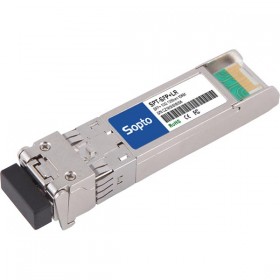- Fiber Optic Transceiver Module
- High Speed Cable
- Fiber Optical Cable
- Fiber Optical Patch Cords
- Splitter CWDM DWDM
- PON Solution
- FTTH Box ODF Closure
- PCI-E Network Card
- Network Cables
- Fiber Optical Adapter
- Fiber Optical Attenuator
- Fiber Media Converter
- PDH Multiplexers
- Protocol Converter
- Digital Video Multiplexer
- Fiber Optical Tools
- Compatible
- Can SFP+120KM be available? ...
- Why the price has so huge di...
- Can XFP transceiver modules ...
- Must optical fiber jumper be...
- Is there a module which can ...
- Can different brands SFP tra...
- How long will you change you...
- The difference between DDM S...
- Comparison of EPON and GPON
- Should we use 3rd party’s ...
- How to make differences betw...
- What is Drop Cable?
- Comparison of CWDM and DWDM ...
- GEPON Technology
- Differences of OM1, OM2, OM3...
- What is the armored fiber op...
- What is DAC cable?
- How to Choose A Right Fusion...
- Why Using a Compatible SFP O...
- Optical fiber transmission l...

The meanings of SR、LRM、LR、ER and ZR
Comparison: SFP-10G-SR vs SFP-10G-LR vs SFP-10G-LRM vs SFP-10G-ER vs SFP-10G- ZR, What is the similarity and difference? Now let us make a comparison of the similarity and difference, it will help you choose right 10G SFP+ module depends on your application.

SR、LRM、LR、ER、ZR are terms used in fiber optic communications, stand for the transmission distance of the 10G modules.
Multimode Fiber
10GBase-SR
SR stands for Short Range, these transceivers support link length of 300m over multi-mode fiber and use 850nm lasers. 10GBase-SR is the original multimode optics specification, and is still by far the most commonly used.
10GBase-SR it uses a single, low cost solid state laser assembly, it is also the least expensive of the optical modules available for a 10GbE platform. However, 10GBase-SR is very sensitive to fiber type. Its Physical Coding Sublayer 64b/66b PCS is defined in IEEE 802.3 Clause 49 and its Physical Medium Dependent PMD in Clause 52. It delivers serialized data at a line rate of 10.3125 Gbit/s.
10GBase-LRM
LRM means Long Reach Multimode, these transceivers support distance up to 220m over multi-mode fiber and use 1310nm lasers. The replacement to 10GBase-LX4, 10GBase-LRM will reach up to 220m over standard multimode fiber, but without the complexity of the 10GBase-LX4 optics. Instead, a single laser operating at 1310nm is used. This allows LRM optics to be packaged in XFP and SFP+ form factors.
Singlemode Fiber
10GBase-LR
LR means Long Reach, these transceivers support distance up to 10km over single mode fiber and use 1310nm lasers. There is no minimum distance for LR, either, so it is suitable for short connections over singlemode fiber as well.
10GBase-ER
ER means Extended Reach, the data rate of these transceivers support distance up to 40km over single mode fiber and use 1550nm lasers. 10GBASE-ER has a reach of 40 kilometres over engineered links and 30 km over standard links.Due to the laser power, attenuation is required for links less than 20km long.
10GBase-ZR
ZR also stands for Extended Reach which can transmit 10G data rate and 80km distance over single mode fiber and use 1550nm lasers. Due to the very high transmit power, significant attenuation is needed for shorter links. Use of ZR optics should be preceded with an optical power test of the fiber span in question to ensure a problem-free deployment. Interestingly, 10GBase-ZR is actually not an IEEE standard, though most vendors offer a ZR option.It delivers serialized data at a line rate of 10.3125 Gbit/s.
| interconnect | AKA | Date Rate | Wavelenth | Fiber Mode | Max range | Connector | Medium |
| 10GBASE-SR | Short wavelength,short reach | 10.3125Gbit/s | 850nm | Serial Multimode | 300m | X2,SFP+ | Fiber |
| 10GBASE-LR | Long wavelength,long reach | 10.3125Gbit/s | 1310nm | Serial singlemode | 10km | XENPAK,X2,XFP,SFP+ | Fiber |
| 10GBASE-LRM | Long wavelength multi-mode | 10.3125Gbit/s | 1310nm | serial Multimode | 220m | XENPAK,X2,SFP+ | Fiber |
| 10GBASE-ER | Extra long wavelength | 10.3125Gbit/s | 1550nm | serial singlemode | 40km | XENPAK,X2,XFP,SFP+ | Fiber |
| 10GBASE-ZR | 10.3125Gbit/s | 1550nm | serial singlemode | 80km | XENPAK,X2,XFP,SFP+ | Fiber |
conclusion:
10G transceivers series mainly includes 10G XENPAK, 10G X2, 10G XFP and 10G SFP . XENPAK was the very first MSA for 10GE coupled with been the biggest form factor. X2 was later competing standards with smaller form factors. XFP came after X2 and it is also smaller. SFP offer a smaller form factor and also the ability to offer 1G/10G combo ports on hardware. you can also find more information here: 10G Transceiver
Tags:10G transceiver modules, transmission distance of 10G module





